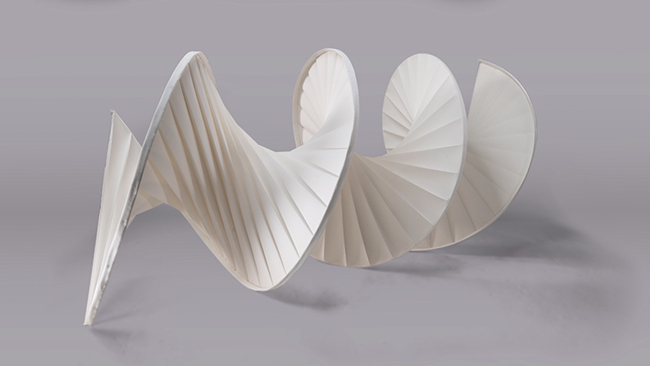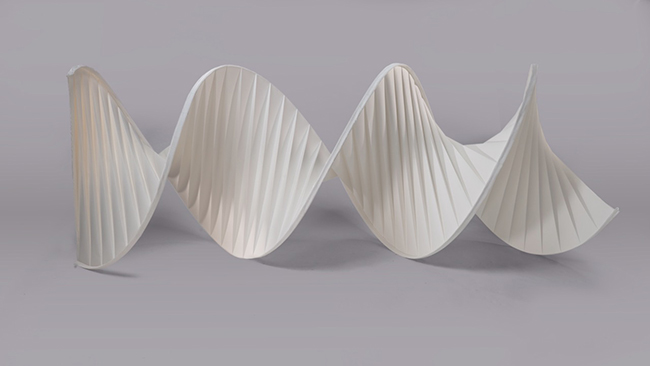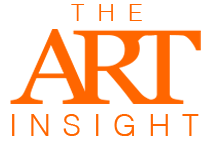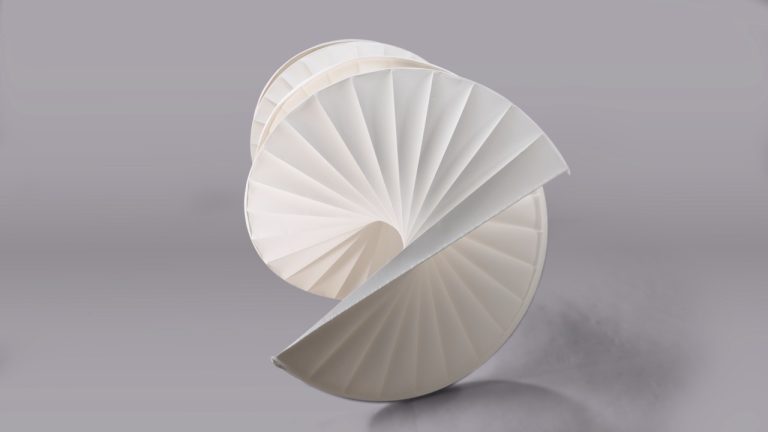There’s a quiet intensity to Haeley Kyong’s work—an insistence on stripping things down until only the essential remains. “I love creating artwork that captivates and inspires people’s minds,” she says, and her art reflects that desire for honest connection. She avoids clutter and spectacle, choosing instead to work with simple shapes that carry emotional weight. Her pieces are built on the belief that color and form, when arranged just right, can express the inexpressible. They can stand in for both the physical and the abstract—the seen and unseen. Kyong’s curiosity about nature’s rhythm and structure feeds her creative process. She studies how things grow, how patterns repeat, and how the simplest line can reveal something deep. Her art isn’t meant to shout; it’s meant to slow us down, to help us notice what usually slips by unnoticed.
A Circular Story Teller

Kyong’s latest project, A Circular Story Teller, explores what defines us as human beings—how we are built, what we inherit, and what remains unseen. “I am fascinated by what makes us who we are,” she writes, “from the visible aspects to the invisible roots.” That curiosity extends beneath the skin, into the world of DNA—the invisible thread that connects us all. To Kyong, this structure is both scientific and poetic, both code and mystery. “We didn’t ask to be made this way,” she reflects. “We just inherited it. Without choice.”
The artwork itself takes the form of a single, enormous sheet of Arches watercolor paper, forty-two inches by one hundred ninety-two inches. Folded by hand using traditional techniques, the paper becomes a living structure, an interpretation of DNA’s double helix. It’s less a painting than a sculptural meditation—one that blurs the line between precision and intuition. The folds cast shadows that move with light, creating a sense of quiet motion. Each crease carries the suggestion of replication, like life repeating itself in rhythm.

The physical act of folding transforms the work from concept into experience. The paper bends, twists, and holds tension, embodying the very process it seeks to represent. It’s architectural but tender—an object that feels both deliberate and organic. The repetition of folds recalls genetic sequencing, but also breath, prayer, or memory. What lies between the folds remains unseen, echoing the mystery of our own making.
Kyong approaches DNA not just as a biological code but as a metaphor for human connection. For her, it represents continuity—a pattern passed through time, a story that keeps rewriting itself. The circular form of the work reflects that idea. Life, like the piece, has no fixed beginning or end; it loops through replication, transformation, and renewal.
Her choice of watercolor paper adds a quiet vulnerability to the piece. The texture absorbs light differently from metal or digital media. It holds traces of her hand, of time, and of touch. The imperfections in the folds—the soft edges, the small asymmetries—become part of its voice. The work’s physical fragility is what gives it strength. While DNA may define existence on a molecular level, Kyong’s paper structure expresses the human impulse to make meaning from it. It’s not just a symbol of life, but an act of care—something shaped slowly, deliberately, by hand.
There’s a meditative rhythm in her process. Folding a sheet of paper that spans more than fifteen feet is an act of patience and endurance. It mimics the invisible work happening in every cell, the constant repetition that sustains life. Through this repetition, Kyong translates the microscopic into something visible and tactile. The scale of the work feels monumental, yet its surface invites intimacy. Viewers find themselves tracing the folds as though they were reading an unspoken story.
- A Circular Story Teller * exists somewhere between drawing and sculpture, science and poetry. It captures Kyong’s belief that art can hold both logic and emotion, reason and wonder. Her use of geometry doesn’t impose control—it opens a dialogue between chaos and order, between what can be measured and what can only be felt. Each shadow along the surface becomes a pause, each line a thought extended into space.
In the end, Kyong’s exploration of DNA becomes a reflection on being itself. We are shaped by forces we cannot see, by codes written long before our birth. Yet within that structure lies the potential for beauty and renewal. Her work asks us to look at ourselves not as isolated beings, but as part of a vast, ongoing pattern.
Through A Circular Story Teller, Haeley Kyong brings the unseen to light. The folds of paper speak of inheritance, creation, and the endless repetition that defines existence. Each crease is a fragment of the human story—one that continues to unfold, again and again, in quiet, circular motion.

